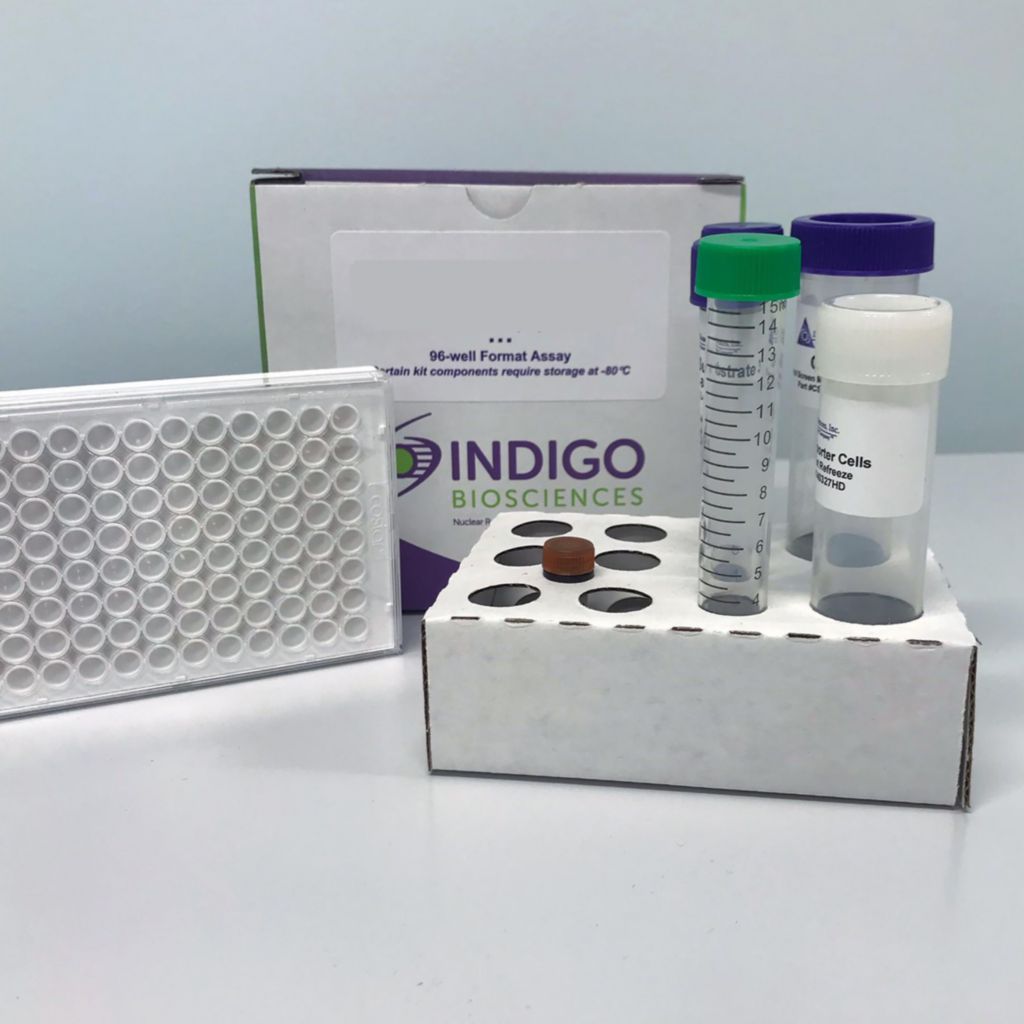Product Description and Product Data
This is an all-inclusive cell-based luciferase reporter assay kit targeting the Human Erythropoietin Receptor (EPOR). INDIGO’s EPOR reporter assay utilizes proprietary mammalian cells that have been engineered to provide constitutive expression of EPOR. In addition to EPOR Reporter Cells, this kit provides two optimized media for use during cell culture and in diluting the user’s test samples, a reference agonist, Luciferase Detection Reagent, and a cell culture-ready assay plate. The principal application of this assay is in the screening of test samples to quantify any functional activity, either agonist or antagonist, that they may exert against human EPOR. This kit provides researchers with clear, reproducible results, exceptional cell viability post-thaw, and consistent results lot to lot. Kits must be stored at -80C. Do not store in liquid nitrogen. Note: reporter cells cannot be refrozen or maintained in extended culture.
Features
Clear, Reproducible Results
- All-Inclusive Assay Systems
- Exceptional Cell Viability Post-Thaw
- Consistent Results Lot to Lot
Product Specifications
| Target Type | Cytokine Receptor | ||
| Species | Human | ||
| Receptor Form | Native | ||
| Assay Mode | Agonist, Antagonist | ||
| Kit Components |
| ||
| Shelf Life | 6 months | ||
| Orthologs Available | No | ||
| Shipping Requirements | Dry Ice | ||
| Storage temperature | -80C |
Data
Target Background
EPOR is a member of the class I cytokine receptor superfamily. Erythropoietin (EPO), the physiological activator of EPOR, is a glycoprotein that regulates erythropoiesis. EPO, produced by the adult kidneys, activates the cell-surface EPOR to initiate signal transduction through JAK2/STAT5, and other pathways including AKT and ERK1/2. The activation of these various pathways may culminate in the activation of cytosolic targets, or in the activation of specific transcription factors and the induction of their specific target genes.
JAK2 dependent phosphorylation and activation of the transcription factor STAT5 is a prominent outcome of EPOR activation, and it is the signaling pathway exploited by the reporter cells in this assay kit. Specifically, INDIGO’s Reporter Cells contain the luciferase gene functionally linked to an engineered minimal promoter sequence with upstream tandem STAT5 genetic response element (GRE) sequences. Erythropoietin activates EPOR in a dose-dependent manner, thereby triggering the JAK2/STAT signal transduction cascade. Activated STAT5 binds to its consensus GREs to initiate the formation of a complete transcription complex that drives expression of the Luc reporter gene. Therefore, quantifying changes in luciferase activity from peptide-, drug-, or antibody-treated reporter cells relative to that of ‘untreated’ cells provides a sensitive, dose-dependent surrogate measure of changes in the activity of EPOR.
The clinical use of recombinant human EPO has led to the successful treatment of anemia associated with conditions ranging from chronic kidney disease, chemotherapy treatment for cancer, and surgery-associated blood loss. However, side effects including hypertension, increased risk for stroke, venous thromboembolism, and death, are also risks for patients treated with hEPO and other biosimilars. This provides an opportunity for the development of additional erythropoiesis stimulating agents (ESAs) which lack these adverse effects. Additionally, though erythroid progenitor cells express the highest levels of EPOR, it is also expressed on non-erythroid cells, including neural cells, myoblasts, and adipocytes, indicative of important physiological functions of EPO outside its essential role in erythropoiesis.
The primary application of this reporter assay is to screen test materials for any functional activity, either agonistic or inhibitory, that they may exert against the human EPOR.
Also available as a service

